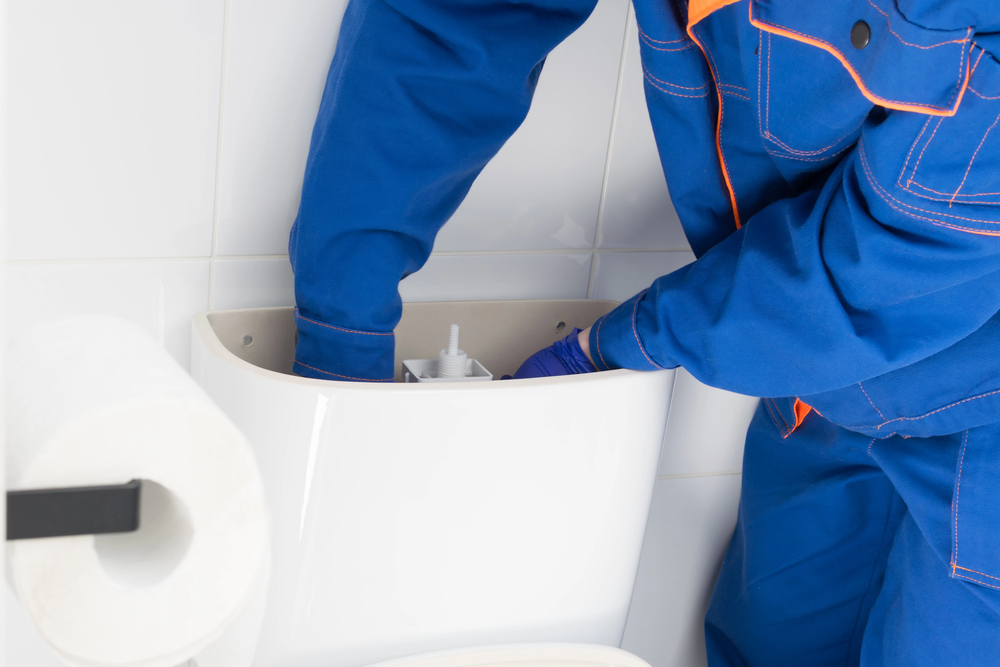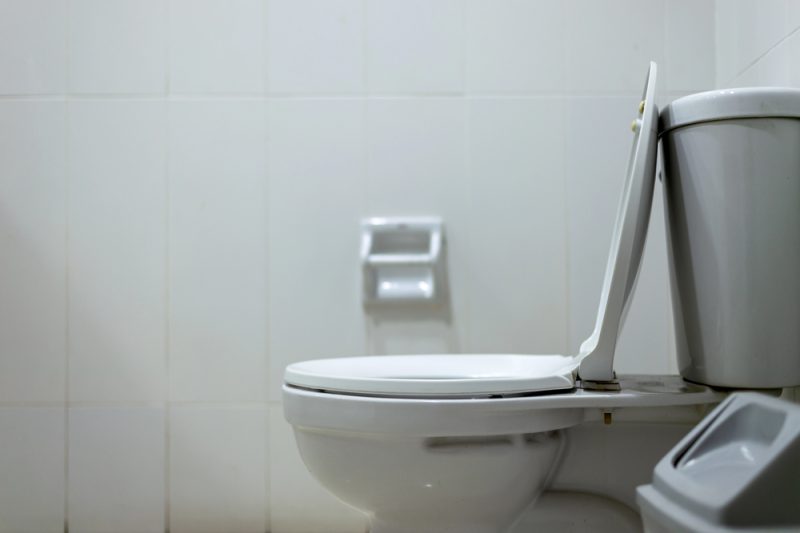A toilet that keeps running is a small nuisance that can turn into a big waste of water and cash if left unchecked. The sound of water cycling in the tank is annoying and can make a quiet house feel like it’s got a trickle that won’t stop.
Fixes range from a quick tweak to a part swap that takes less than half an hour, while some issues call for a bit more elbow grease or a pro. Read on to learn common causes, what to look for, and simple checks you can run through before calling a plumber.
Flapper Seal Wear and Tear
The rubber flapper at the base of the tank is the most frequent culprit when a toilet keeps running, since it must form a perfect seal to stop water flow. Over time the flapper becomes soft, warped, or coated with mineral sediment that prevents a tight fit, so water slips by in a steady stream.
A rough test is to press the flapper down gently after a flush; if the sound stops, the flapper is likely the issue and a replacement is cheap and simple. Many modern flappers just snap in place and can be swapped out in minutes, restoring a quiet, trouble-free flush.
Chain and Handle Issues
A chain that’s too tight can prevent the flapper from closing all the way, while a chain that’s too long can get snagged under the flapper and hold it ajar. Handles with worn pivots or bent parts also fail to lift or lower the flapper cleanly, creating irregular motion that leads to running.
Check that the chain has a small amount of slack but not so much that it folds under the flapper; adjust the clip or shorten the link to suit. Replacing a corroded handle is inexpensive and often fixes persistent problems where nothing else seems at fault.
Fill Valve Deterioration
The fill valve, sometimes called the ballcock, controls water entering the tank and can stick open or let a trickle past when its parts wear. Older valves are prone to internal erosion and leaking at the seals, producing a continuous refill cycle that keeps the toilet running.
Swapping old units for newer pressure-sensitive or float-cup designs often resolves ongoing fill problems and improves water efficiency. Installation is straightforward for a do-it-yourselfer comfortable with shutting off the supply and loosening a few nuts.
Float Mechanism Malfunctions

Floats set the water level in the tank, and when they’re stuck, punctured, or set incorrectly the water can rise into the overflow tube and never stop. Some systems use a ball on an arm, while others use a cylinder float; both types can be nudged back to correct height or replaced if the mechanism is damaged.
A quick adjustment usually stops the continuous flow by lowering the cut-off point so the fill valve closes properly. If the float drifts upward on a corroded arm, swapping the arm or float often cures the problem entirely.
Overflow Tube Mis-set or Damage
The overflow tube prevents overfilling by diverting excess water into the bowl, but if the water level is set above the tube’s lip or if the tube itself is cracked, water will run constantly. An improperly seated refill tube that pushes too far into the overflow tube can also siphon water out of the tank.
Trim or reposition the refill tube so it rests above the overflow opening without being shoved inside, and replace any cracked tubing to stop unwanted flow. Checking the fill height against the overflow lip is one of the quickest diagnostics for this scenario.
For a hassle-free solution, you can rely on licensed experts offering all types of plumbing work for Shah Alam residents, ready to tackle even the toughest toilet or leak problems with professional care.
Siphoning Through the Refill Tube
When the refill tube is inserted too far or routed poorly, it can create a siphon that steadily draws tank water into the bowl and triggers continuous refilling. This subtle problem often sounds like a low, steady trickle and can be missed on first glance, but the remedy is simple: reposition the tube so it feeds into the overflow without plunging into it.
Some toilet designs require a small clip to keep the tube aligned correctly, and replacing that clip restores proper function. Siphoning is a classic case of a tiny detail causing an outsized headache.
Mineral Buildup and Deposits
Hard water leaves calcium and limescale on seals, seats, and ports, which prevents valves and flappers from mating cleanly and sealing shut. A flapper sprinkled with scale can look fine but still leak in microscopic spots that let water skirt past; the same goes for valve seats that appear intact but are rough to the touch.
A soak in white vinegar or a gentle scrubbing with an old toothbrush often removes deposits and restores a tight seal, though severely corroded parts should be replaced. Regular cleaning can extend the life of internal parts and keep a running toilet from becoming routine.
Corroded or Warped Tank Parts
Metal components such as the lift arm, bolts, or nut hardware can corrode over time, bending or seizing and causing misalignment that prevents valves from closing. Plastic parts exposed to heat or chemical cleaners sometimes warp, changing clearances and letting water slip through.
Inspect the tank interior after draining the water; loose bolts, bent brackets, or cracked plastic can signal the need for new parts or a full kit replacement. Because many repair kits bundle the commonly failing pieces, replacing several at once can be a cost-effective fix.
High Water Pressure and Irregular Supply
Excessively high supply pressure can force water past valves that would otherwise hold, and pressure spikes from municipal systems or pumps can trigger intermittent running. If water noises sound different at other fixtures or if a pressure regulator exists on the supply line, that regulator can be checked and adjusted or replaced.
Installing a modern fill valve designed for variable pressure often helps keep the tank at a steady level without constant cycling. A plumber can test static and dynamic pressure quickly if household checks don’t reveal the issue.
Hidden Leaks and Silent Seeping
A slow, invisible leak from tank to bowl is easy to miss because it leaves little puddle on the floor, yet it can account for gallons lost each day as the toilet refills continually. A common test is to add a drop of food coloring to the tank and watch the bowl without flushing; colored water in the bowl within minutes points to a leak past the flapper or valve seat.
That quiet transfer of water often calls for a new flapper, a reseated valve, or a clean valve seat to restore watertight operation. Fixing such leaks can cut water waste dramatically and lower monthly bills.
Faulty Flush Valve Seat
The flush valve seat is the mating surface under the flapper that must be smooth and level to stop flow, and wear or imperfections here create a slow drain. Sometimes the seat is corroded or pitted where the flapper rests, letting a fine stream slip through that prevents the tank from holding pressure.
Certain seats can be resurfaced with a gentle abrasive or replaced if badly damaged, and a matched flapper from the manufacturer ensures a snug fit. Since the seat is central to sealing, attention to its condition often ends repeat fixes.
Old or Cracked Tank and Gaskets
Cracks in the tank or deteriorated gaskets at connections let water move where it shouldn’t, and while many leaks are visible, some hairline fractures release enough to keep a toilet running intermittently. The large gasket between tank and bowl can compress unevenly or fail, causing internal leaks that prompt repeated refilling.
Inspect the exterior and interior of the tank for hairline cracks and test all gasket surfaces for brittleness or flattening; replacement gaskets are inexpensive and often restore a proper seal. When a tank itself is compromised, replacing it or the whole unit may be the most practical path.







